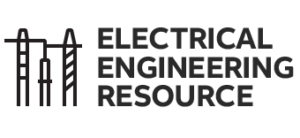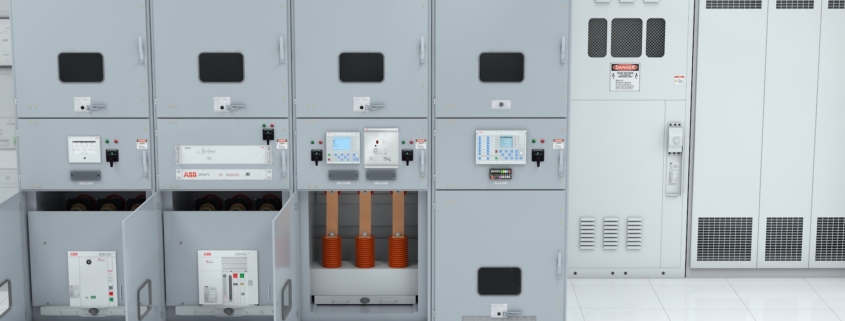Built to perform: Advanced instrument transformers raise the bar for OEMs
The increasing complexity of industrial and commercial power distribution is driving demand for instrument transformers that offer compact form factors, broader operating ranges, and withstand frequent switching surges—even in harsh environments. Advancements in transformer technology enable OEMs to meet these challenges with smarter, more efficient, and space-saving solutions.
Instrument transformers (ITs) play a critical role in electrical distribution systems by stepping down the medium and high voltages and currents to low levels that are safer for control, protection, and measurement. Instrument transformers are typically used in medium voltage distribution equipment for metering (energy billing), protection control (protective relays), and load management (industrial loads). With the growing complexity of modern energy systems driven by increased renewable integration, distributed energy resources (DERs), expanding data center loads, and rapid industrialization, the demand for fit-for-purpose, cost-effective, reliable, and highly robust instrument transformers has never been greater. In this article, we’ll focus on four advancements that help electrical OEMs deliver robust solutions for their customers.
#1 Degradation-resistant insulation for greater reliability and robustness
Moisture and dust accumulation increase the chance of an equipment flashover and partial discharge, so instrument transformers need to be able to withstand frequent rainfall, high humidity, and elevated levels of particulate matter from heavily polluted areas.
Instrument transformers are traditionally constructed with butyl rubber, cycloaliphatic epoxies, or polyurethane casings, but the second generation of ITs now offers HCEP (Hydrophobic Cycloaliphatic Epoxy). This epoxy resin offers exceptional hydrophobic, anti-tracking, particulate-resistant, and UV-resistant properties that don’t require compromising on the insulation or mechanical properties, making it an ideal material for outdoor applications. A hydrophobic insulation prevents water from causing a completely wet, resistive conductive surface. Leakage currents are therefore reduced, which helps to reduce the flashover risk. This results in enhanced reliability without the need for periodic maintenance. Furthermore, less discharge activity allows fewer attacks on the insulation and therefore less surface erosion and wear, which extends the transformer’s life.
#2 CVC combo units for easier installation and enhanced space utilization
A CVC combination unit combines a current transformer (CT) and a voltage transformer (VT) into a single device, making installation and maintenance easier. This also minimizes the lifecycle cost by reducing the number of ITs that need to be monitored and maintained, which can significantly lower lifecycle costs over the lifespan of the equipment. As a result, CVC units are becoming a staple in primary metering applications.
CVC combo units are also ideal for space-constrained installations since only one device is required, allowing the OEM to minimize the space requirements for padmount switchgear applications. ABB’s combo units deployed for overhead PMU applications can also be installed upright instead of in the horizontal or cantilever position required for individual CT and VT configurations, thus allowing for a compact design. Mounting all units upright also removes the challenge and potential safety risk of installing instrument transformers in a cantilever or inverted position.
Finally, by integrating current and voltage measurements into a single unit, these devices reduce the primary cabling and secondary wiring, junction boxes, and pathways, thus minimizing the risk of electrical faults or hazards. The compact and lightweight design aligns with modern sustainability goals, as it reduces the material footprint and energy required for installation and maintenance.
#3 Wide-range, high-accuracy metering for greater revenue generation
High-accuracy, wide-range transformers, like ABB’s revenue-grade metering CTs with AccuRange™, allow electric utilities to collect higher revenue without pushing for rate case increases. These high accuracy CTs exceed 0.15S metering accuracy class by providing 0.15% accuracy from 1% of the rated primary current through its rating factor (R.F). This feature allows utilities to reap high-revenue benefits, especially for renewable (DER) customers where a wide load current swing is caused by the intermittency of the renewable source (solar, wind, battery energy storage, etc).
OEMs also benefit immensely from these high-accuracy CTs. The wide current range allows OEMs to reduce the CT variants and the need for a specific transformation ratio for a specific application. This results in lower inventory, fewer part numbers, and fewer stock outs.
#4 VFTO-withstand capabilities
The advent of vacuum switching technology through circuit breakers and reclosers poses a challenge on voltage transformers due to the very fast transient overvoltages (VFTOs) that – develope during a switching operation. These VFTOs are also observed at the point of interconnection for solar and wind farms. These high-rise, high-frequency transients cause localized stresses within transformer windings, especially around the line terminal, causing interwinding insulation degradation. The consequence is a catastrophic failure of the voltage transformer, which can also damage the neighboring equipment or the housed enclosure.
To help OEMs address this customer challenge, ABB introduced transformers with ResiVolt™ winding technology that linearizes the impulse voltage distribution throughout the winding thus improving its immunity towards these overvoltage transients. Together, with the industry leading HCEP solid dielectric insulation and high-creepage distance, ABB guarantees a robust, reliable voltage transformer with a superior VFTO-withstand capability.
One size does not fit all
The growing complexity of today’s power systems demands instrument transformers that are not only reliable but also efficient, compact, and future-ready. Whether for renewable, commercial, or industrial use, instrument transformers are an essential component for metering, protection, and local control power. Unfortunately, no one style or model fits all situations.
ABB addresses these needs with innovations such as HCEP insulation for outdoor durability, space-saving CVC combo units, AccuRange™ high-accuracy CTs for improved revenue metering, and ResiVolt™ technology for enhanced VFTO withstand performance. These advancements help OEMs streamline installation, reduce maintenance costs, and improve system reliability—all while meeting stringent performance standards. With these solutions, ABB enables electrical OEMs to deliver smarter, safer, and more resilient power distribution systems tailored to modern energy challenges.
See related blog post “Renewable energy storage = Big opportunities for OEMs and panel builders“.
—
Product Marketing Specialist for Medium Voltage Outdoor Products




